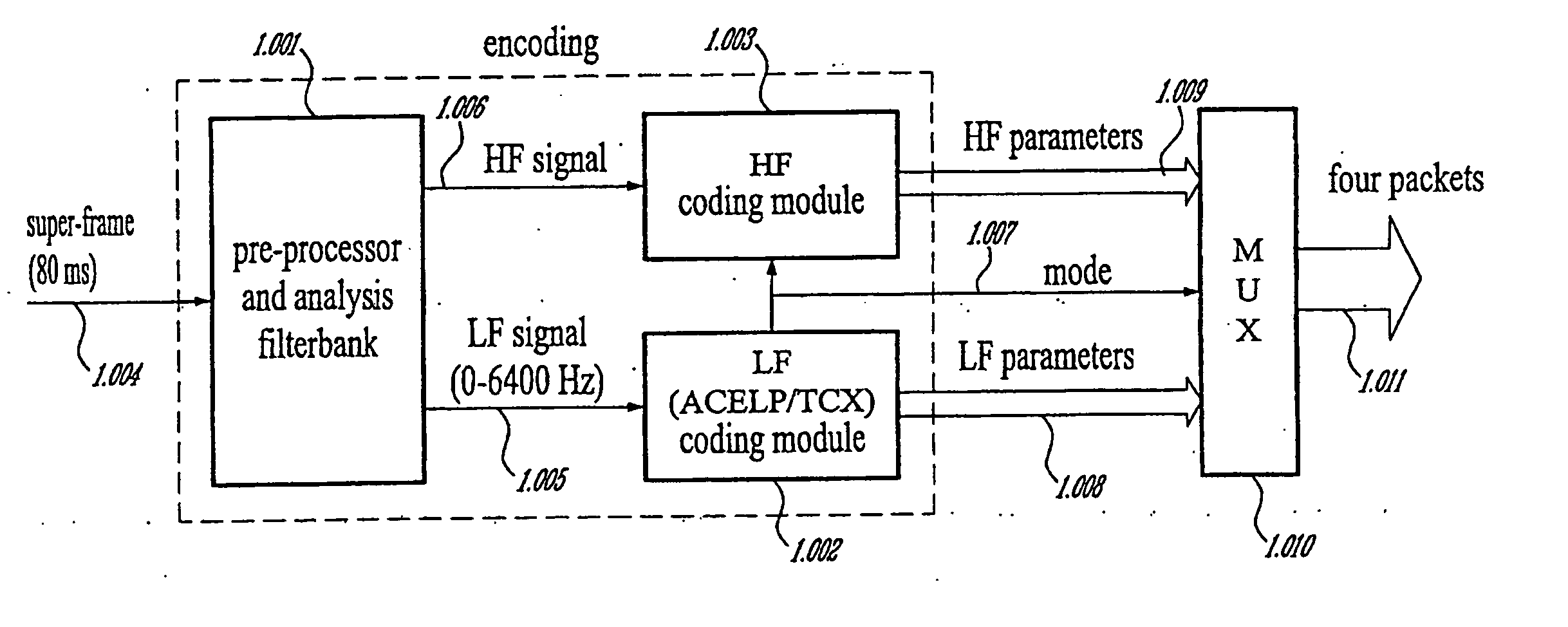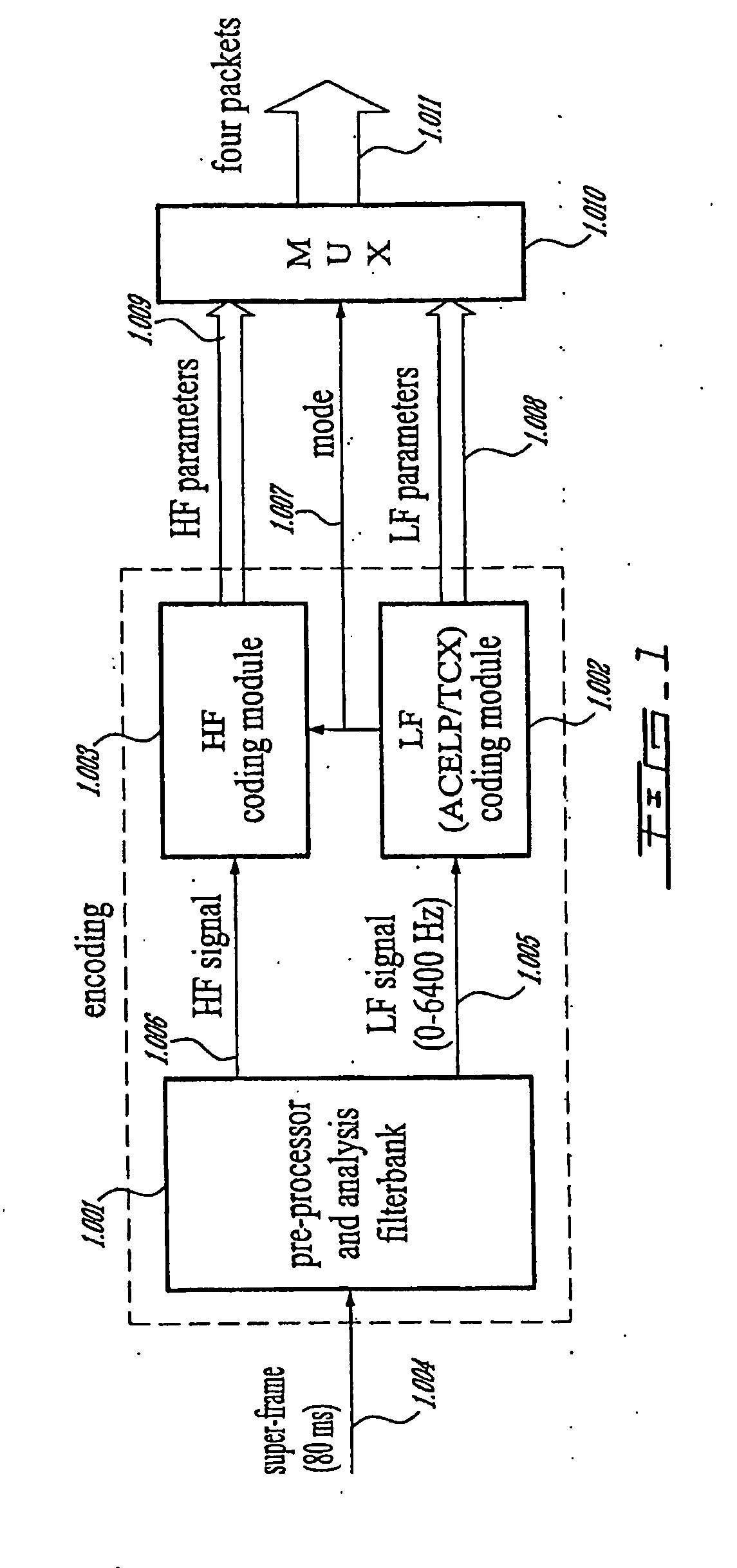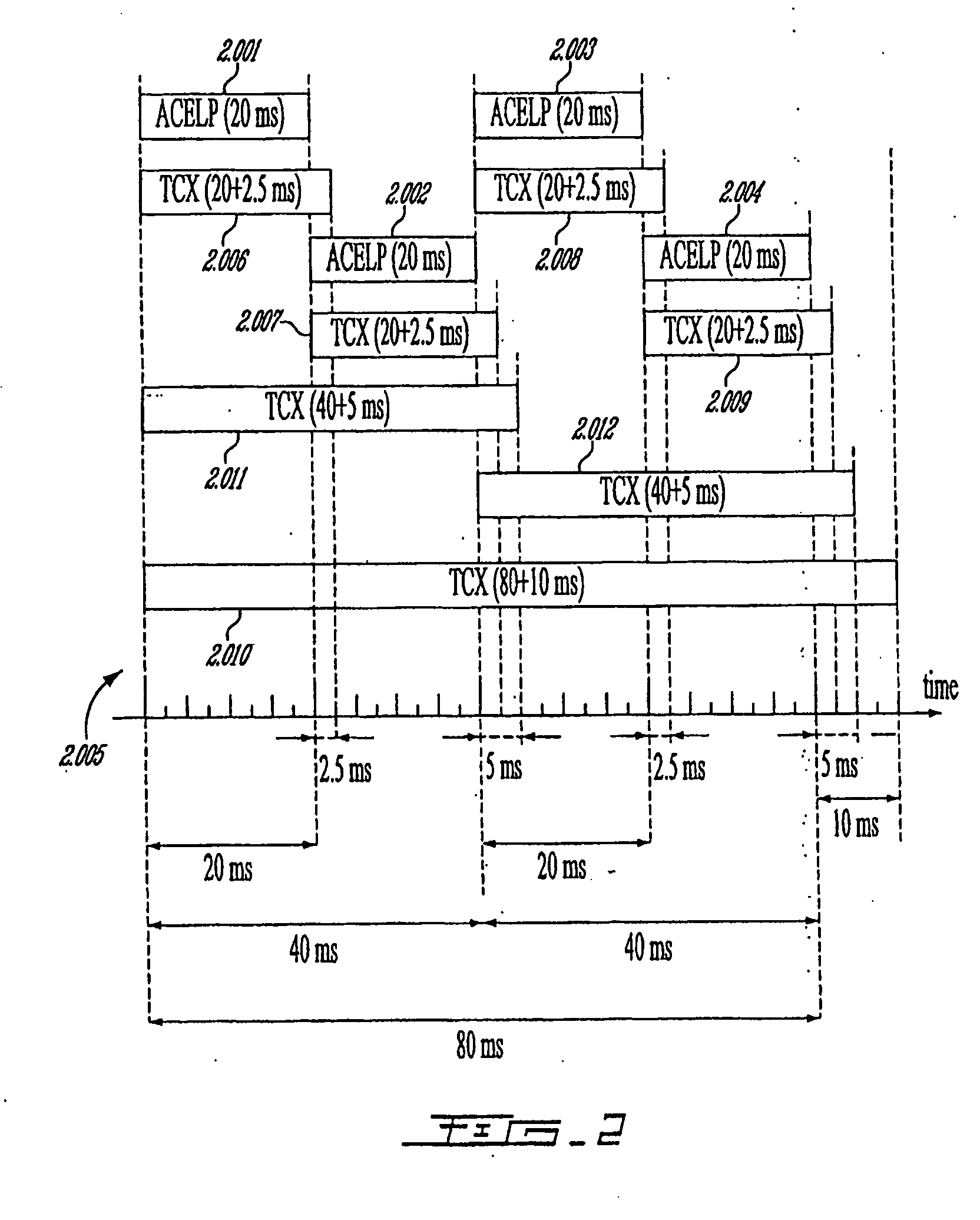Methods and devices for low-frequency emphasis during audio compression based on ACELP/TCX
a low-frequency emphasis and audio compression technology, applied in the field of coding and decoding of sound signals, can solve the problems of not being suitable for coding speech signals, not being able to achieve low-bit rate coding, and not being able to achieve tcx coding as efficiently as acelp
- Summary
- Abstract
- Description
- Claims
- Application Information
AI Technical Summary
Benefits of technology
Problems solved by technology
Method used
Image
Examples
case 1
[0391] One embodiment of TCX decoder is shown in FIG. 15. A switch selector 15.017 is used to handle two different decoding cases: [0392] Packet-erasure concealment in TCX20 through modules 15.013 to 15.016 when the TCX frame length is 20 ms and the related packet is lost, i.e. BFI_TCX=1; and [0393] Case 2: Normal TCX decoding, possibly with partial packet losses through modules 15.001 to 15.012.
[0394] In Case 1, no information is available to decode the TCX20 frame. The TCX synthesis is made by processing, through a non-linear filter roughly equivalent to 1 / Â(z) (modules 15.014 to 15.016), the past excitation from the previous decoded TCX frame stored in the excitation buffer 15.013 and delayed by T, where T=pitch_tcx is a pitch lag estimated in the previously decoded TCX frame. A non-linear filter is used instead of filter 1 / Â(z) to avoid clicks in the synthesis. This filter is decomposed in three (3) blocks: a filter 15.014 having a transfer function Â(z / γ) / Â(z) / (1−α z−1) to ma...
PUM
 Login to View More
Login to View More Abstract
Description
Claims
Application Information
 Login to View More
Login to View More - R&D
- Intellectual Property
- Life Sciences
- Materials
- Tech Scout
- Unparalleled Data Quality
- Higher Quality Content
- 60% Fewer Hallucinations
Browse by: Latest US Patents, China's latest patents, Technical Efficacy Thesaurus, Application Domain, Technology Topic, Popular Technical Reports.
© 2025 PatSnap. All rights reserved.Legal|Privacy policy|Modern Slavery Act Transparency Statement|Sitemap|About US| Contact US: help@patsnap.com



